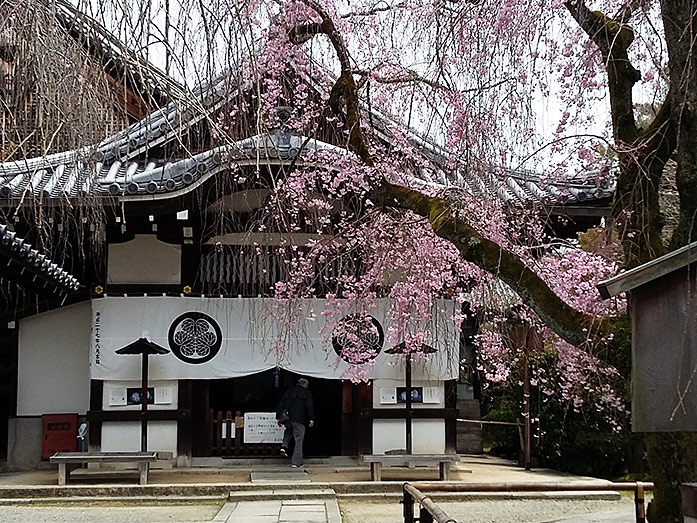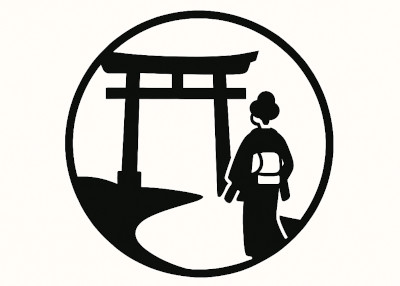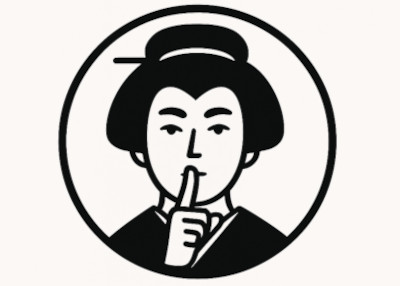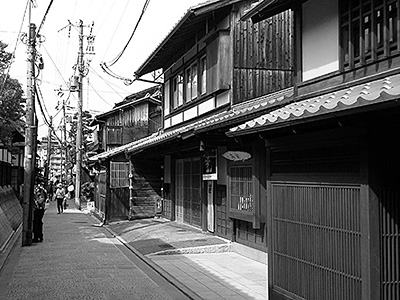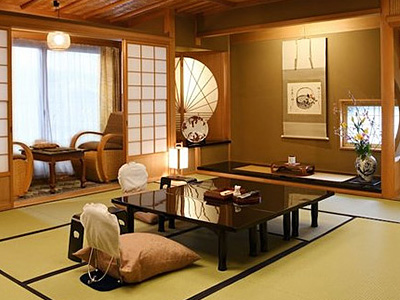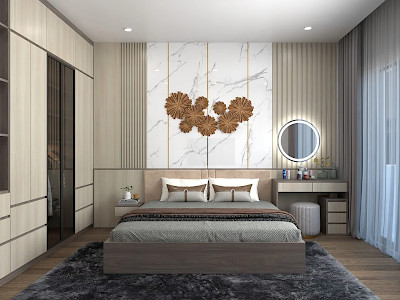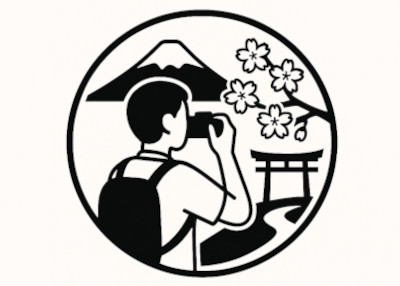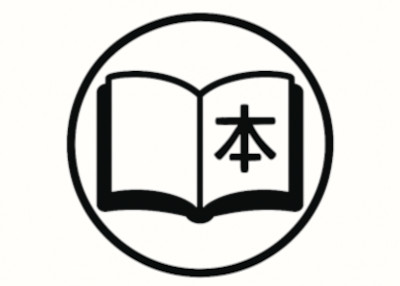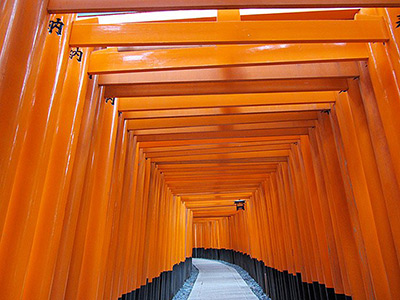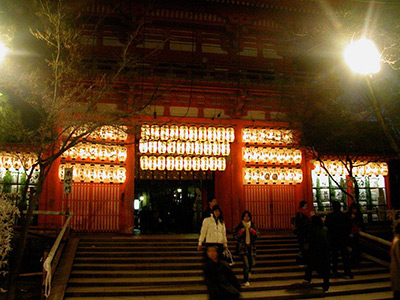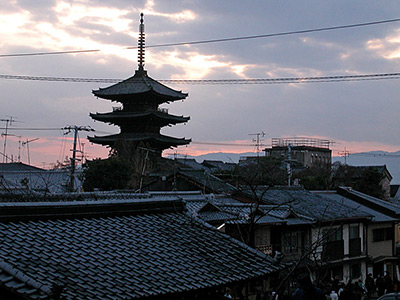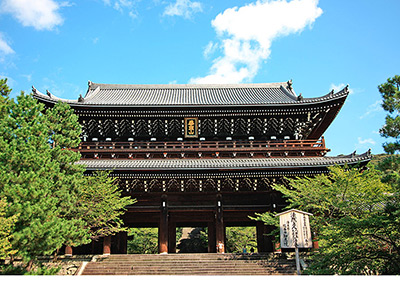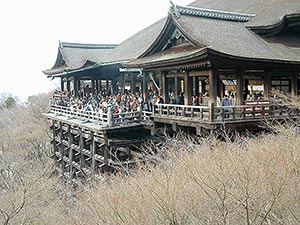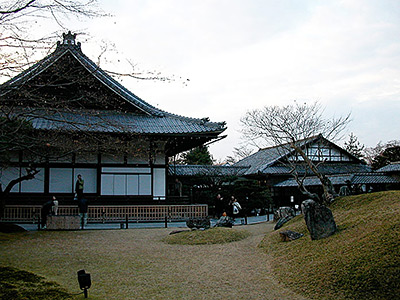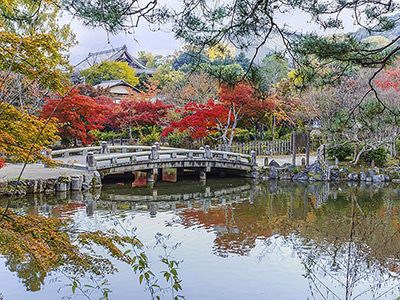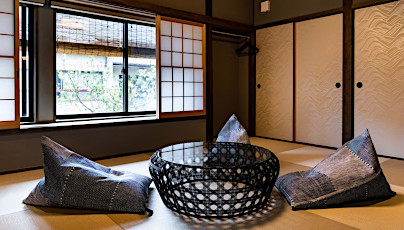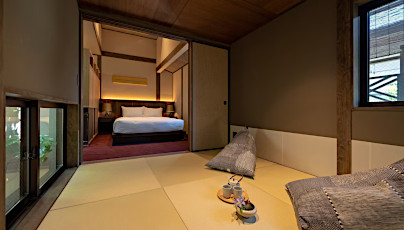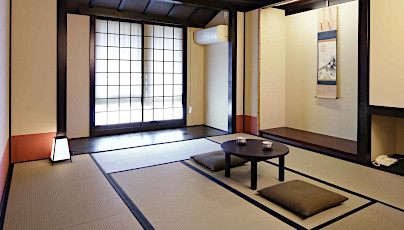Yogen-in Temple in Kyoto
This post can contain affiliate links, which means that we may receive a small commission if you make a purchase using these links.
Facts & Figures
The Yogen-in Temple, a Jodo Shinshu Kengo-in Buddhist temple in Kyoto, is famous for its main hall and the so-called blood ceiling. It is the blood of Mototada Ioni and other samurai warriors, who committed suicide at the end of an 11-day siege on the floor of Fushimi Castle in 1600. The remains of the castle floor were sent to 5 different temples in Kyoto (Genkoan Temple, Shoden-ji Temple, Hosen-in Temple, Myoshin-ji, and Yogen-in).
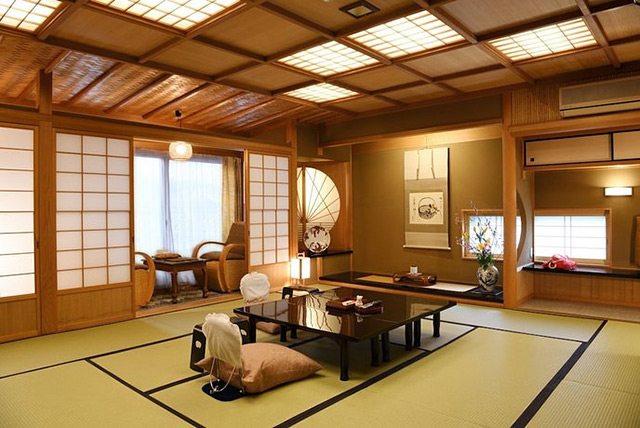 Experience the Ultimate Japanese Hospitality at a Kyoto Ryokan.
Experience the Ultimate Japanese Hospitality at a Kyoto Ryokan.
Find Your Perfect Ryokan Now >
Yogen-in was one of them. Do not miss the beautiful drawings of giraffes, Chinese lions, and white elephants on the doors, made of Japanese cedar, and fusuma (traditional sliding doors) by artist Sotatsu Tawaraya (c. 1570 – c. 1640). The temple's screen paintings have the status of Important Cultural Properties. These drawings made a long-lasting impression and can be found now in art education textbooks for Japanese students. Unfortunately, there were no pictures allowed inside the building.
- Yogen-in Temple:
- Opening Hours - 9:00 am to 5:00 pm
- Admission Fee - 500 yen (Adults), 300 yen (Children)
History
In 1594 Yogen-in Temple was established by Yodo-dono, concubine of shogun Hideyoshi Toyotomi (1536 - 1598), for the memorial service for her father Nagamasa Asai. The Buddhist name of Nagamasa was Yogen-in and this name was later used for the temple. A cousin of Nagamasa, Hoin Suhaku, was then designated as the founder of Yogen-in. After a huge fire, the temple was reconstructed in 1621 by Sugen-in, the second wife of shogun Hidetada Tokugawa (1579 - 1632) and the younger sister of Yodo-dono. The remains of Fushimi Castle were relocated and used for the reconstruction process. Since 1621 Yogen-in was owned by the Tokugawa Family and the memorial tablets of successive shoguns are enshrined here.
Location

Yogen-in is located in the Higashiyama district in Kyoto near the entrance of Sanjusangen-do.
Address: 656 Sanjusangendo-mawari-cho, Higashiyama Ward, Kyoto 605-0941
How to get to Yogen-in Temple?
- 20min walk from Kyoto Station or
- 10min from Kyoto Station to Hakubutsukan-Sanjusangen-do-Mae stop by bus nr. 100, 206 and 208
Sightseeing spots
Top:
Blood stained ceiling - The remains of this tragedy in 1600 are still visible.
Festival & Events (dates can change without notice)
April
Miyako Odori (1st - 31th)
The traditional annual spring dance of the Kyoto district Gion Kobu performed by Geiko and Maiko is a must-see on your Kyoto visit. Don't miss the most popular dances the Miyako Odori "Cherry Blossom Dances" or "Dances of the Old Capital" at the Gion Kobu Kaburenjo Theater (located close to Gion Corner).
May
Aoi Matsuri (15th)
The highlight of this festival is a large parade from the Imperial Palace through the Shimogamo Shrine to the Kamigamo Shrine. More than 500 people wearing aristocratic costumes from the Heian Period (794 - 1185). The Aoi Matsuri belongs with the Gion Matsuri and Jidai Matsuri as the three most famous festivals in Kyoto.
Arashiyama Mifune Matsuri (third Sunday of May)
The first part is held at the Kuramazaki Shrine. Later a procession is leading to the Oi River, where more ceremonies and traditional dances (Funa Asobi) are held. The Arashiyama Mifune Matsuri started in 1914.
July
Gion Matsuri (whole month)
The month of July is full of different events like the Yoiyama - Kyoto's Magical Night (locals in kimonos look at the giant Gion floats the day before the parade) or the famous Yamaboko Junko (float procession on the 17th of July).
October
Jidai Matsuri ("Festival of Ages") (22nd)
People celebrate with a large parade between Imperial Palace to Heian Shrine the anniversary of the foundation of Kyoto. App. 2000 participants wearing historical costumes from different time periods. Enjoy this great festival which lasts around 2 hours.
Where to stay in Kyoto?
Book your Flight Tickets and Rental Car for your Japan trip
Day trips from Kyoto:
Travelers who viewed Yogen-in Temple viewed also:
Top rated - Best Machiya Houses in Kyoto
THE MACHIYA Ebisuya, 192 Ebisuya-cho Shimogyo-ku, Kyoto 600-8062
This 3-star guesthouse got an excellent rating. All 30 individually furnished rooms offer free WiFi, air conditioning, bathrooms incl. toilets, fridges, 40-inch flat-screen TVs, and more. THE MACHIYA Ebisuya is located in central Kyoto.
View on Expedia.com
This 3-star guesthouse got an excellent rating. All 30 individually furnished rooms offer free WiFi, air conditioning, bathrooms incl. toilets, fridges, 40-inch flat-screen TVs, and more. THE MACHIYA Ebisuya is located in central Kyoto.
View on Expedia.com
The Machiya Kazahaya, 570-6 Kazahayacho, Shimogyo-ku, Kyoto, Kyoto, 600-8475
The Machiya Kazahaya offers for all guest rooms free WiFi, air conditioning, safes, bathrooms with toilets, refrigerators, and much more. Enjoy also the beautiful Japanese Garden. Guests gave this property the rating - Exceptional.
View on Expedia.com
The Machiya Kazahaya offers for all guest rooms free WiFi, air conditioning, safes, bathrooms with toilets, refrigerators, and much more. Enjoy also the beautiful Japanese Garden. Guests gave this property the rating - Exceptional.
View on Expedia.com
Kyomachiya Ryokan Sakura Urushitei, 425 Kichimonjicho, Shimogyo-ku, Kyoto, 600-8069
This beautiful 3-star guesthouse offers 32 rooms with free WiFi, air conditioning, bathrooms incl. showers and toilets, refrigerators, and much more. Enjoy also the relaxing indoor public bath (no minerals). Guests gave this property the rating - Wonderful.
View on Expedia.com
This beautiful 3-star guesthouse offers 32 rooms with free WiFi, air conditioning, bathrooms incl. showers and toilets, refrigerators, and much more. Enjoy also the relaxing indoor public bath (no minerals). Guests gave this property the rating - Wonderful.
View on Expedia.com

